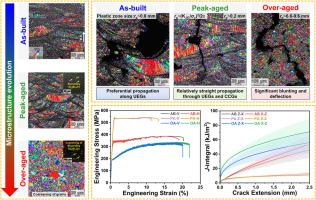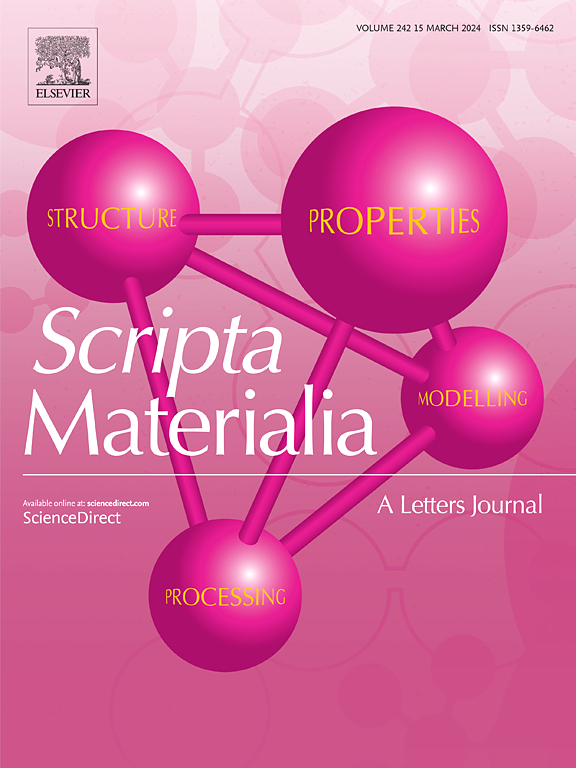Fracture toughness and crack resistance of laser powder bed fused Al-Mg-Sc-Zr alloy: Effect of precipitate and bimodal grain structure
IF 5.6
2区 材料科学
Q2 MATERIALS SCIENCE, MULTIDISCIPLINARY
引用次数: 0
Abstract
The effect of microstructural evolution induced by heat treatment on the strength, fracture toughness, and crack resistance curve of a laser powder bed fused (LPBF) Al-Mg-Sc-Zr alloy in three conditions (as-built, peak-aged, and over-aged) and along two orthogonal directions was examined. The as-built samples exhibit a bimodal grain structure comprising ultrafine equiaxed grains and coarse columnar grains, displaying isotropic crack initiation toughness (KJIC) but anisotropic crack growth resistance, due to preferential crack propagation along ultrafine equiaxed grain regions. Peak-aged samples show increased strength due to densely-distributed Al3(Sc, Zr) precipitates but reduced toughness and unstable crack growth. In contrast, the over-aged samples exhibit the highest KJIC values, driven by extensive crack-tip plasticity and larger plastic zone size, leading to pronounced anisotropy. These results emphasize the critical role of microstructure and plastic zone size in governing the fracture behavior of LPBF Al alloys.

激光粉末床熔合Al-Mg-Sc-Zr合金的断裂韧性和抗裂性能:析出相和双峰晶粒组织的影响
研究了激光粉末床熔合Al-Mg-Sc-Zr合金在三种状态(初铸、峰时效和过时效)和两个正交方向上热处理组织演化对其强度、断裂韧性和抗裂曲线的影响。构建的样品呈现出由超细等轴晶和粗柱状晶组成的双峰型晶粒结构,由于裂纹优先沿超细等轴晶区扩展,具有各向同性的裂纹起裂韧性和各向异性的抗裂纹扩展能力。由于密集分布的Al3(Sc, Zr)析出,峰时效样品的强度增加,但韧性降低,裂纹扩展不稳定。相反,超龄试样的KJIC值最高,这是由广泛的裂纹尖端塑性和较大的塑性区尺寸驱动的,导致了明显的各向异性。这些结果强调了微观组织和塑性区尺寸在控制LPBF铝合金断裂行为中的关键作用。
本文章由计算机程序翻译,如有差异,请以英文原文为准。
求助全文
约1分钟内获得全文
求助全文
来源期刊

Scripta Materialia
工程技术-材料科学:综合
CiteScore
11.40
自引率
5.00%
发文量
581
审稿时长
34 days
期刊介绍:
Scripta Materialia is a LETTERS journal of Acta Materialia, providing a forum for the rapid publication of short communications on the relationship between the structure and the properties of inorganic materials. The emphasis is on originality rather than incremental research. Short reports on the development of materials with novel or substantially improved properties are also welcomed. Emphasis is on either the functional or mechanical behavior of metals, ceramics and semiconductors at all length scales.
 求助内容:
求助内容: 应助结果提醒方式:
应助结果提醒方式:


